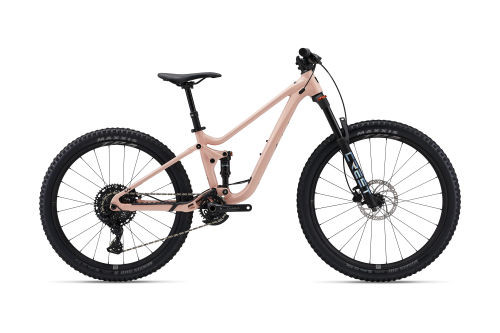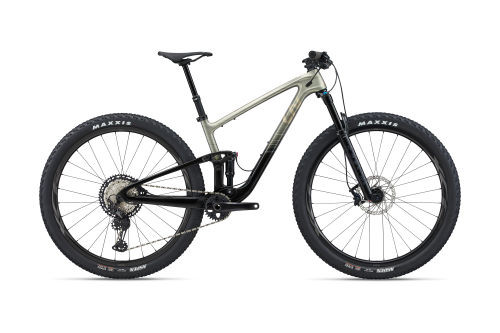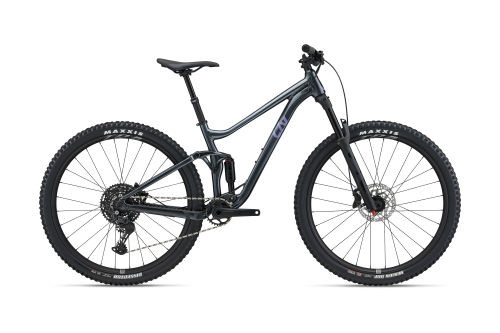Embarking on off-road adventures is an exhilarating experience, and for women seeking the thrill of mountain biking, having the right bike is paramount. Women’s mountain bikes are engineered to provide superior control, comfort, and performance, tailored specifically to the female anatomy and riding style. Whether you’re dreaming of conquering challenging trails, enjoying cross-country rides, or just starting your off-road journey, understanding the world of women’s mountain bikes is your first step towards unforgettable outdoor experiences.
Choosing the ideal mountain bike can feel overwhelming, with a plethora of models and features available. This guide will navigate you through the essentials of women’s mountain bikes, helping you understand what makes them unique and how to select the perfect one to match your aspirations and skill level. From geometry considerations to component choices, we’ll cover the key aspects to ensure you find a bike that not only fits but also elevates your mountain biking adventures.
Understanding Women’s Specific Mountain Bikes
Women’s mountain bikes are more than just smaller versions of men’s bikes with different colors. They are designed with specific considerations to enhance the riding experience for women. Key differentiators often include frame geometry, contact points, and component selection.
Geometry and Fit: Frame geometry is a crucial aspect of bike design. Women typically have a different body proportion compared to men, with shorter torso lengths and narrower shoulders on average. Women’s specific mountain bikes often feature a shorter reach and a higher stack height. This geometry promotes a more upright and comfortable riding posture, enhancing control and reducing strain, especially on longer rides. The top tube might also be lowered to increase standover clearance, providing more confidence on technical terrains.
Contact Points: Components that you directly interact with, like the saddle, handlebars, and grips, are vital for comfort and control. Women’s mountain bikes usually come with saddles designed to accommodate the female anatomy, often wider and with pressure relief channels. Handlebar width and grip diameter might also be narrower, catering to smaller hand sizes, leading to better bike handling and reduced hand fatigue.
Suspension Tuning: Suspension is key for mountain biking, absorbing shocks and maintaining tire contact with the ground. Women’s specific models might feature suspension systems that are tuned for lighter rider weights, providing optimal performance and responsiveness on varied terrains. This ensures that the suspension works effectively to improve traction and control, enhancing the overall riding experience.
 Faith Liv
Faith Liv
Image: Radiant pink Faith Liv women’s mountain bike, showcasing a lightweight frame and designed geometry for optimal women’s fit.
Types of Women’s Mountain Bikes
Mountain bikes are diverse, designed for various riding styles and terrains. Understanding the main categories will help you narrow down your choices based on your intended use.
Cross-Country (XC) Bikes: XC mountain bikes are built for speed and efficiency over varied terrains, including climbs and descents. They are typically lightweight, with front suspension and sometimes full suspension, optimized for pedaling efficiency and agility. Women who enjoy fast-paced rides, covering long distances, and participating in races often prefer XC bikes.
Trail Bikes: Trail bikes are the all-rounders of the mountain bike world, designed to handle a wide range of trails, from technical climbs to challenging descents. They offer a balance between pedaling efficiency and downhill capability, usually featuring more robust suspension than XC bikes and a geometry that inspires confidence on steeper and more technical trails. For women looking for versatility and fun on diverse trails, a trail bike is an excellent choice.
Beginner Mountain Bikes: For women new to mountain biking, beginner-friendly mountain bikes prioritize stability, ease of handling, and comfort. These bikes often have a more relaxed geometry, reliable components, and are designed to be forgiving and confidence-inspiring as you learn the ropes and build your skills on the trails. Hardtail bikes (front suspension only) are common in this category, offering simplicity and value.
 Pique Advanced 29
Pique Advanced 29
Image: Golden haze Pique Advanced 29 women’s mountain bike, a high-performance full-suspension bike suitable for cross-country and trail riding.
Key Components and Features to Consider
Beyond the type of bike, specific components and features play a significant role in performance and enjoyment.
Suspension: The suspension system is crucial for comfort, control, and traction. Front suspension (hardtail) is common for beginner bikes and XC, providing cushioning for the front wheel. Full suspension bikes offer both front and rear suspension, ideal for trail and more aggressive riding, absorbing bumps and providing better control on technical terrain. Consider the amount of travel (suspension movement) based on your riding style and the trails you plan to ride.
Brakes: Reliable brakes are essential for safety and control, especially on descents. Hydraulic disc brakes offer superior stopping power and modulation compared to mechanical disc brakes or rim brakes, and are highly recommended for mountain biking.
Wheel Size: Wheel size affects rolling efficiency, traction, and maneuverability. 27.5-inch wheels offer a good balance of agility and roll-over capability, while 29-inch wheels provide better roll-over capability and momentum, especially on XC and trail bikes. Consider your height and riding style when choosing wheel size.
Frame Material: Frame materials commonly include aluminum and carbon fiber. Aluminum frames are durable and more affordable, making them a great choice for beginners and intermediate riders. Carbon fiber frames are lighter and stiffer, offering enhanced performance, often preferred for high-end XC and trail bikes.
 Embolden
Embolden
Image: Black Diamond Embolden 29 women’s mountain bike, showcasing robust frame and components suitable for trail adventures.
Choosing the Right Women’s Mountain Bike for You
Selecting the perfect women’s mountain bike is a personal journey. Consider these steps to guide your decision:
-
Identify Your Riding Style and Terrain: Think about where you will be riding most often. Are you focused on smooth trails and climbs (XC), tackling varied terrain with ups and downs (Trail), or just starting out on easier paths (Beginner)? Your riding style will significantly influence the type of bike that suits you best.
-
Set a Budget: Mountain bikes range in price from entry-level to high-end. Determine how much you are willing to invest. Remember to factor in additional costs for gear like a helmet, shoes, and apparel. Often, investing a bit more initially can get you better components and a more enjoyable riding experience in the long run.
-
Test Ride: Whenever possible, test ride different bikes. Visit local bike shops, talk to experts, and try out various models. Pay attention to how the bike feels in terms of fit, handling, and comfort. A test ride is invaluable in making an informed decision.
-
Seek Expert Advice: Consult with knowledgeable staff at bike shops. They can provide tailored recommendations based on your needs, budget, and riding aspirations. Don’t hesitate to ask questions and gather information before making your final choice.
Conclusion
A women’s mountain bike is more than just a piece of equipment; it’s a gateway to adventure, fitness, and the great outdoors. By understanding the specific features and types of women’s mountain bikes, you can make an informed decision and choose a bike that will empower you to conquer trails and enjoy countless miles of off-road riding. Explore the range of women’s mountain bikes available, consider your riding style and needs, and get ready to experience the thrill of mountain biking tailored just for you.


